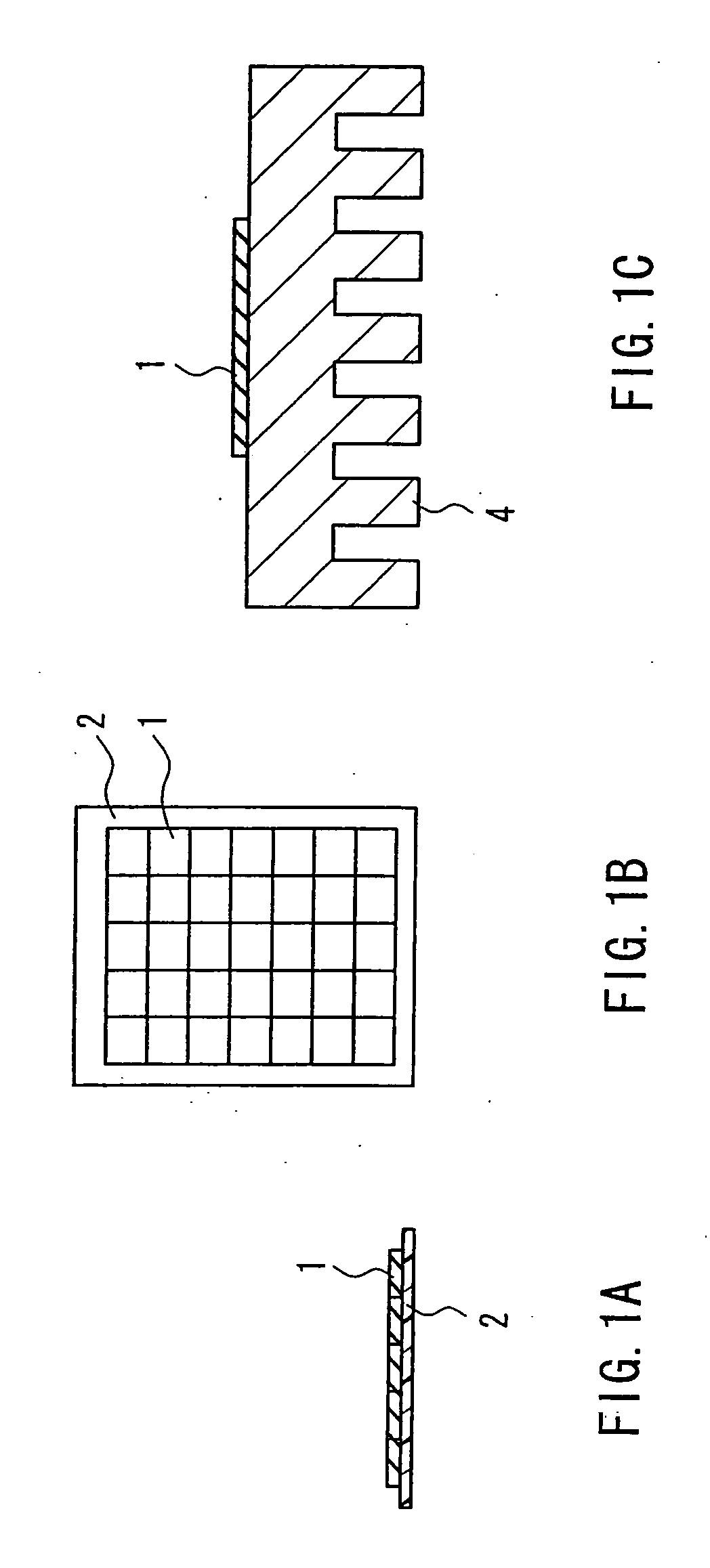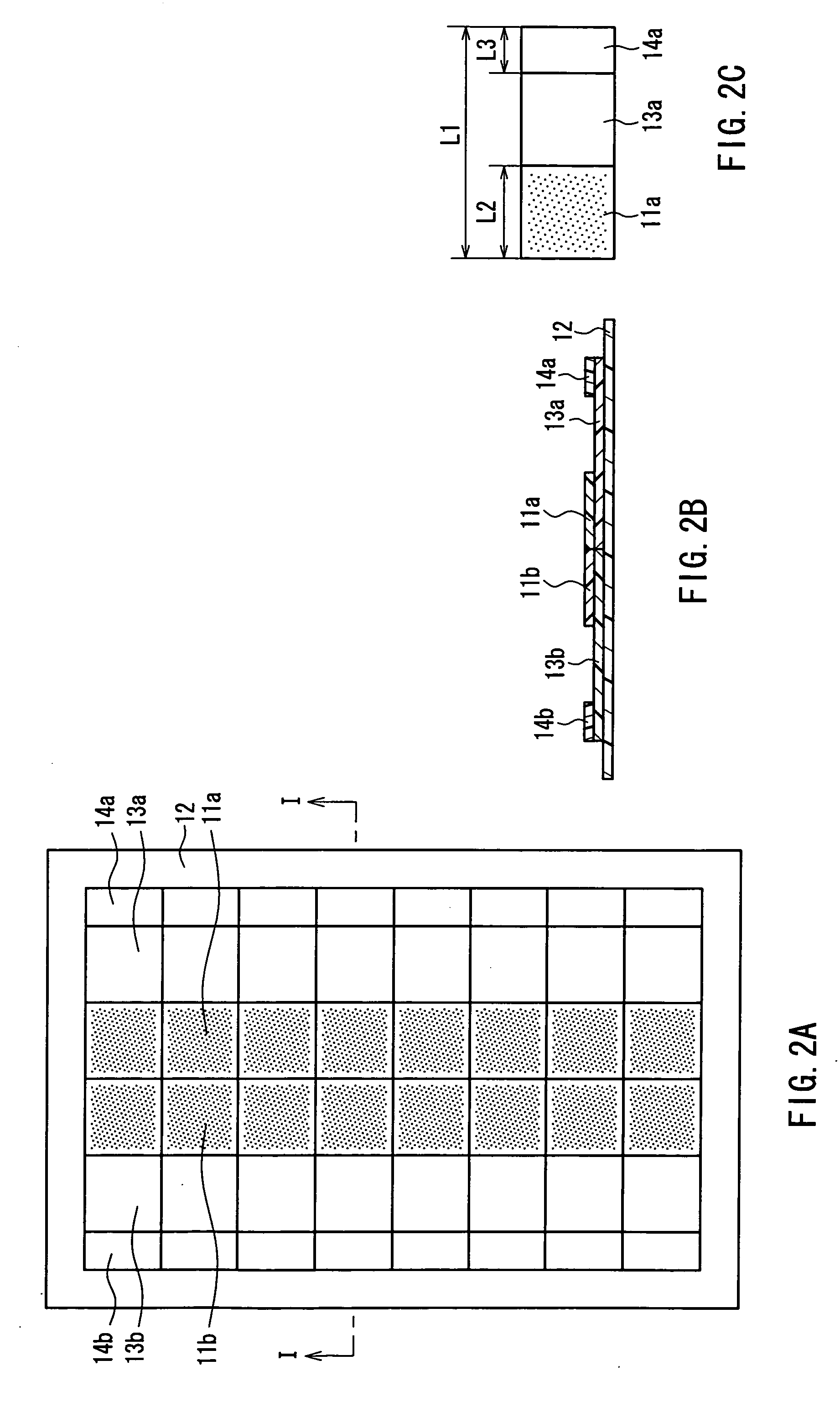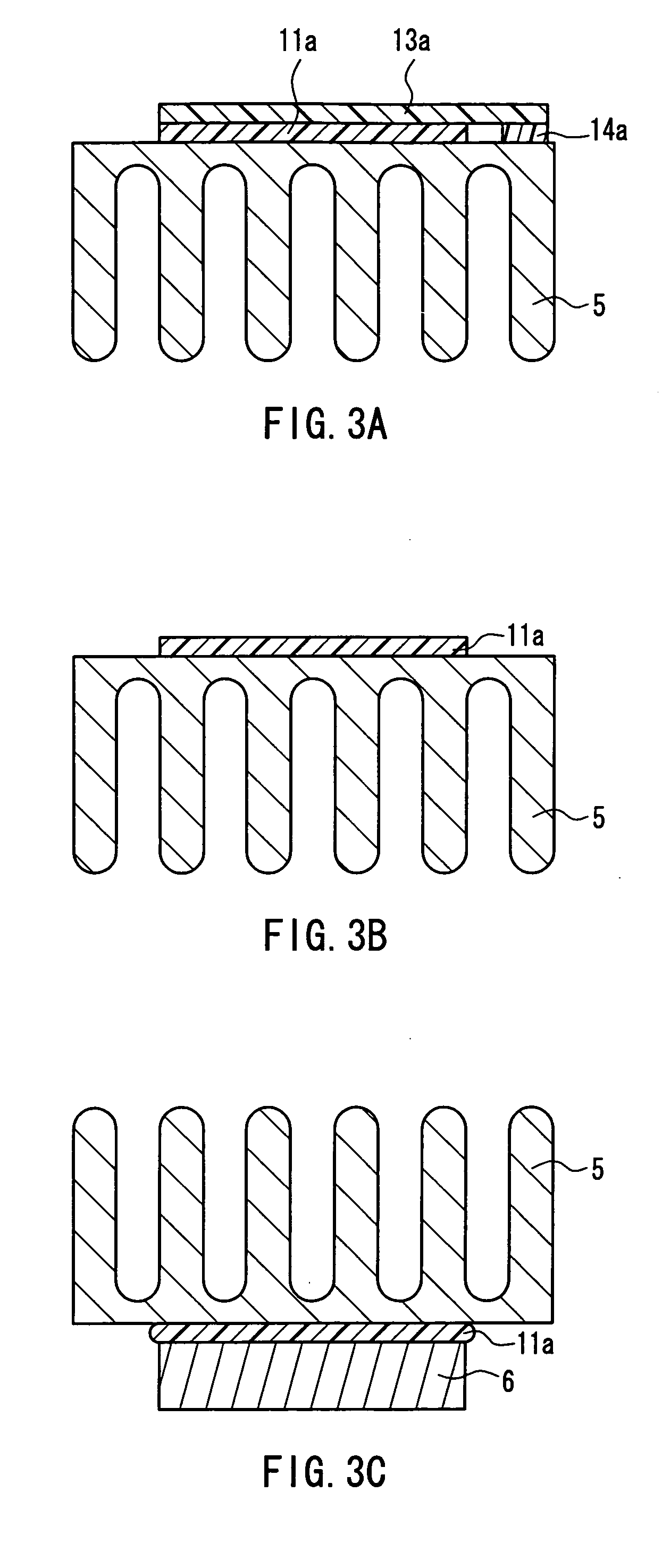Thermal conductive composition and a heat-dissipating putty sheet using the same
- Summary
- Abstract
- Description
- Claims
- Application Information
AI Technical Summary
Benefits of technology
Problems solved by technology
Method used
Image
Examples
example 1
100 mass parts of silicone gel (trade name: SH1886, manufactured by Dow Corning Thray Silicone Co., Ltd.) was prepared. This silicone gel consisted of a solution A and a solution B blended in a ratio (A:B) of 80:20 by mass parts. To this silicone gel 800 mass parts of aluminum oxide particles as a thermal conductive filler (AS30 manufactured by SHOWA DENKO) and 4 mass parts of black iron oxide were added, and the silicone gel was kneaded to provide a thermal conductive composition. This composition was sandwiched between release sheets having fluorine resin layers, and pressed at a temperature of 100° C. for 30 minutes, thereby forming a heat-dissipating sheet having a thickness of 1.5 mm. After peeling one of the release sheets, the thus obtained heat-dissipating sheet was cut into half in the thickness direction (hereinafter, referred to as “half-cut”) with a cutter so as to provide a sample.
FIG. 1A is a cross-sectional view of a heat-dissipating sheet in Example 1, and FIG. 1B ...
example 2
100 mass parts of silicone gel (SH1886, A:B=60:40 by mass part) was prepared. To this silicone gel, 850 mass parts of aluminum oxide particles as a thermal conductive filler (AS30 manufactured by SHOWA DENKO) having an average particle diameter of 17 μm and 250 mass parts of manganese zinc ferrite (manufactured by TODA KOGYO CORP.) having a particle diameter of 5 μm were added, and the silicone gel was kneaded to provide a thermal conductive composition. This composition was sandwiched between release sheets having fluorine resin layers and pressed at a temperature of 100° C. for 30 minutes, thereby forming a sheet having a thickness of 1.5 mm. After peeling one of the release sheets, the thus obtained heat-dissipating sheet was half-cut with a cutter so as to provide a sample. This heat-dissipating putty sheet, having a good repairability, kept its putty state for a long time. The evaluation result will be shown in tables below.
example 3
100 mass parts of silicone gel (SH1886, A:B=80:20 by mass parts) was prepared. To this silicone gel 800 mass parts of aluminum oxide particles as a thermal conductive filler (AS30 manufactured by SHOWA DENKO) and 4 mass parts of black iron oxide were added, and the silicone gel was kneaded to provide a thermal conductive composition. This composition was sandwiched between release sheets having fluorine resin layers and pressed at a temperature of 100° C. for 30 minutes, thereby forming a sheet having a thickness of 0.5 mm. The thus obtained heat-dissipating sheet was bonded to a polyethylene sheet having a thickness of 30 μm, provided with a tab of 10 mm in width, and cut apart with a cutter so as to provide a sample. This heat-dissipating putty sheet, having a good repairability, kept its putty state for a long time. The evaluation result will be shown in tables below.
PUM
| Property | Measurement | Unit |
|---|---|---|
| Temperature | aaaaa | aaaaa |
| Fraction | aaaaa | aaaaa |
| Thickness | aaaaa | aaaaa |
Abstract
Description
Claims
Application Information
 Login to View More
Login to View More - R&D
- Intellectual Property
- Life Sciences
- Materials
- Tech Scout
- Unparalleled Data Quality
- Higher Quality Content
- 60% Fewer Hallucinations
Browse by: Latest US Patents, China's latest patents, Technical Efficacy Thesaurus, Application Domain, Technology Topic, Popular Technical Reports.
© 2025 PatSnap. All rights reserved.Legal|Privacy policy|Modern Slavery Act Transparency Statement|Sitemap|About US| Contact US: help@patsnap.com



